As the only UNESCO World Heritage Building in the US, Monticello beautifully captures the life of a complex historical figure who rebelled against a monarch for freedom while simultaneously illuminating the reality of the people he enslaved. When I told our Hamilton obsessed 10-year-old we’d be rolling past Thomas Jefferson’s house, I knew I’d hook her for a visit. But most importantly, we got to have vital conversations about the duality of his existence and some of the realities of slavery in the United States. Check out our experience guided by Thomas Jefferson’s famous quotes.
“I am savage enough to prefer the woods, the wilds and the independence of Monticello” – TJ
Having purchased our timed entry tickets online, we were ushered through the entry complex and shuttled in an air-conditioned bus to the top of the “little mountain” Jefferson played on as a kid. Looking over the valley of his birth under a grove he started, it’s easy to see why Jefferson selected this site for his architectural opus.
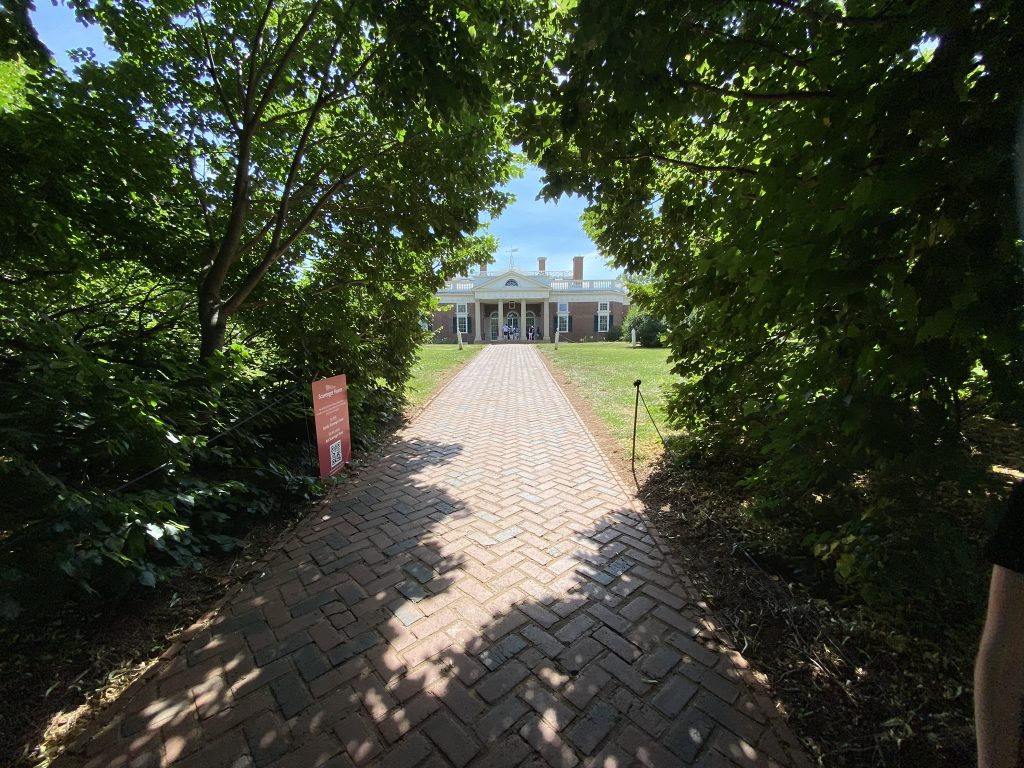
“Never spend your money before you have it” – TJ
While waiting for our tour, we learned that Jefferson developed elaborate tastes during his tenure as the Ambassador to France. He lavished himself, children and home in fine textiles, decor and cuisine, amassing a debt of over $100,000 by the time of his death. Jefferson’s heirs were forced to sell his property to settle the debts, left with only the graveyard to their name. The property of Monticello changed hands several times until the Thomas Jefferson Foundation acquired and began restoring it in 1923. Luckily, Jefferson kept meticulous records, so the foundation has been able to restore many rooms to within inches of authenticity.

“Determine never to be idle” – TJ
Surprised that the famous Rotunda wasn’t the entrance, we were quickly entranced by the museum-like room Jefferson designed to spark conversation with guests. High ceilings add grandeur to an eclectic collection of artifacts reflecting his many interests and our kids began rapid firing queries toward the youngest docent immediately.
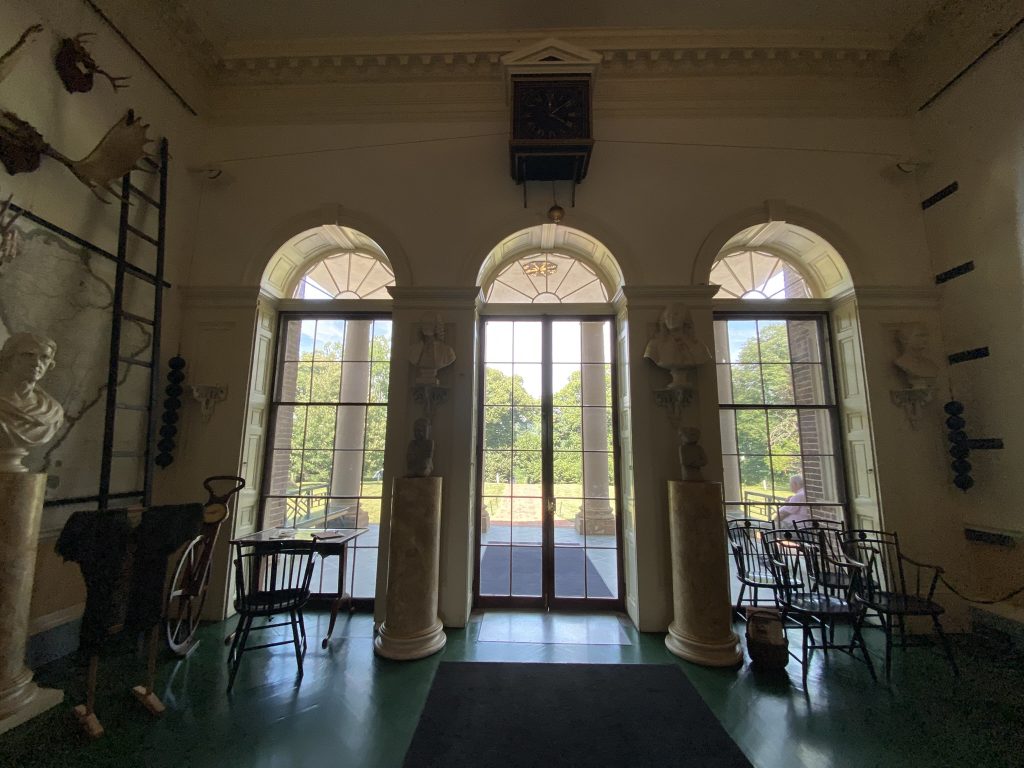
First, we learned that Jefferson had his bust placed across the room from Alexander Hamilton’s so they could “oppose each other in death as they had in life”. In a hilariously petty twist, he ensured his was slightly bigger than Hamilton’s too (#rivalry)! Then the docent showed us how the gravity calendar/clock over the door was reset each week by pulling a rope in the corner of the room back to Sunday.

A displayed mammoth fossil allowed me to bust out my science teacher hat to explain to the kids that people in Jefferson’s time didn’t know about dinosaurs. However, large bones discovered in the Americas led them to believe that there were mammoths or giants in the west, which was a side objective of the Lewis and Clark Expedition.
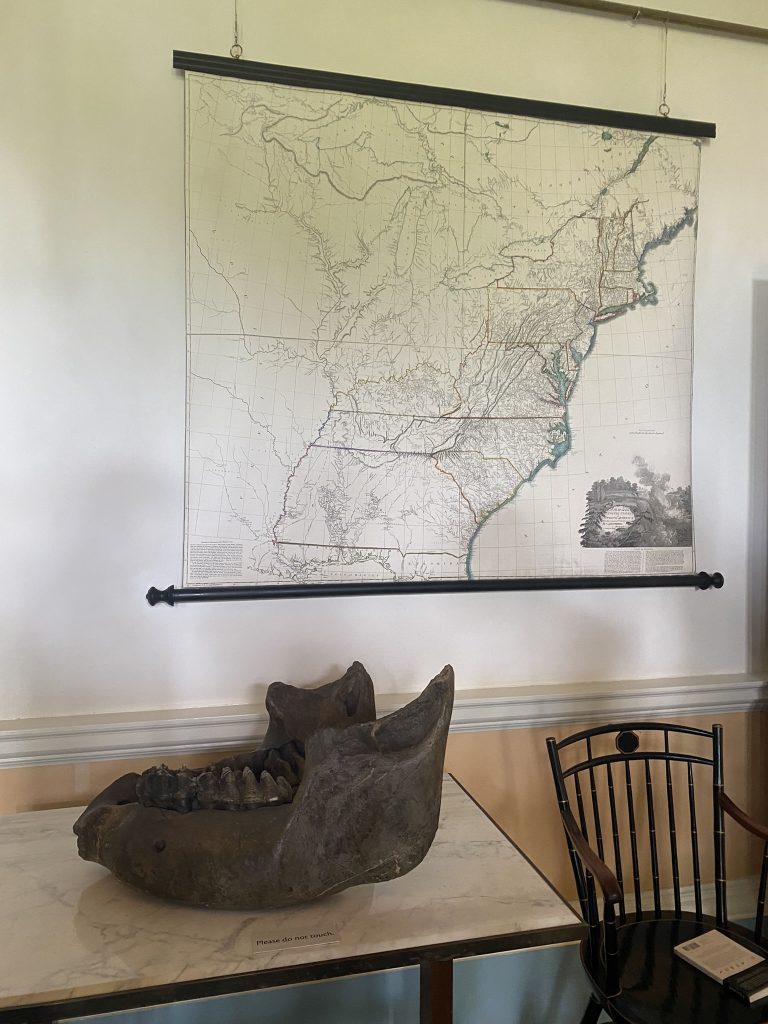
On the note of Lewis & Clark, there was no national museum to house the artifacts acquired from their 1803 venture, so Jefferson displayed them in his house. The originals were sold with everything else in 1826, but these beautiful recreations reflect the artistry of the Native American nations contacted on the trip.
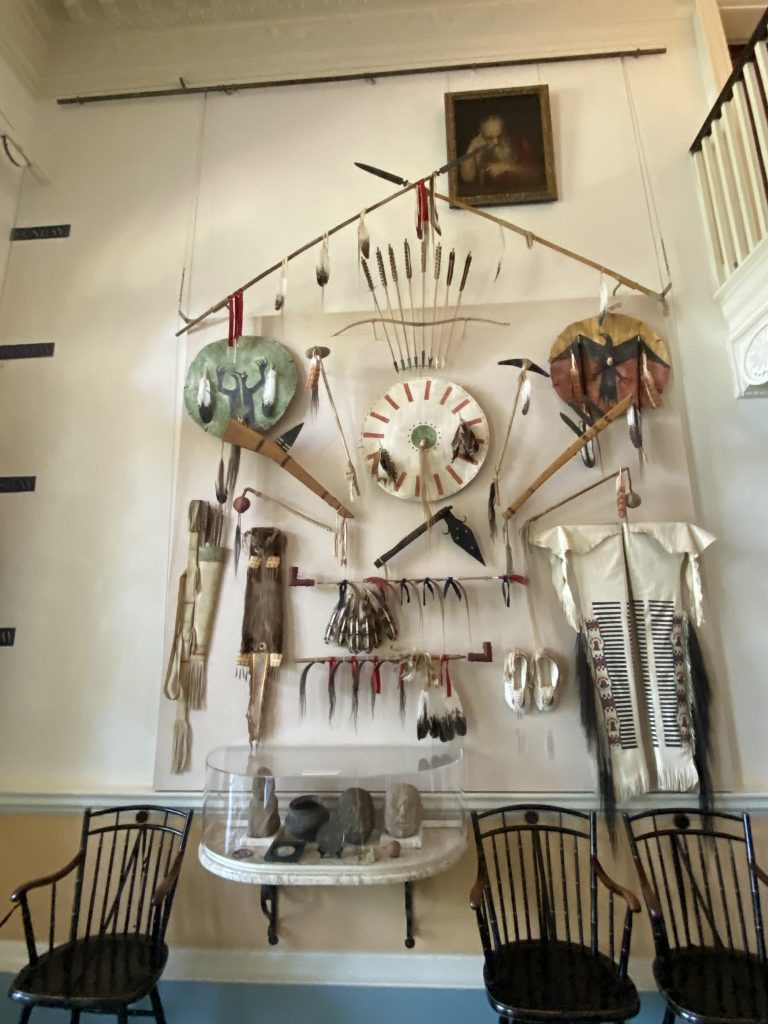
“I’m a great believer in luck, and I find the harder I work the more I have of it.” – TJ
Like many historical properties, Monticello was built in phases as Jefferson acquired larger finances and family. Inheriting the property as a 25-year-old member of the House of Burgesses, Jefferson first built a small two-story home called South Pavillion. There he and wife Martha welcomed their first child while the two-story, three-room house was constructed.

Just as the Jeffersons moved into the first Monticello in 1775, Thomas was elected to the first Continental Congress and began drafting the Declaration of Independence. Returning to Virginia, he served a state delegate followed by Governor until joining the US Congress in 1783. Countless hours were spent in in the eastern quarters of Monticello drafting our country’s founding documents and paving the way for his meteoric career.

“The bloom of Monticello is chilled by my solitude” – TJ
After the war and passing of his wife in 1782, Jefferson left the plantation to serve as the Ambassador to France then First Secretary of State under George Washington. Heavily influenced by his time abroad, he returned with big plans for his home. Renovations to Monticello began in 1796, just as he started his Vice Presidency under John Adams. Construction wrapped up around the same time as his two-term stint as our 3rd President in 1809. Jefferson was eager to return to his beautiful property, which by this time housed almost 30 members of his extended family!
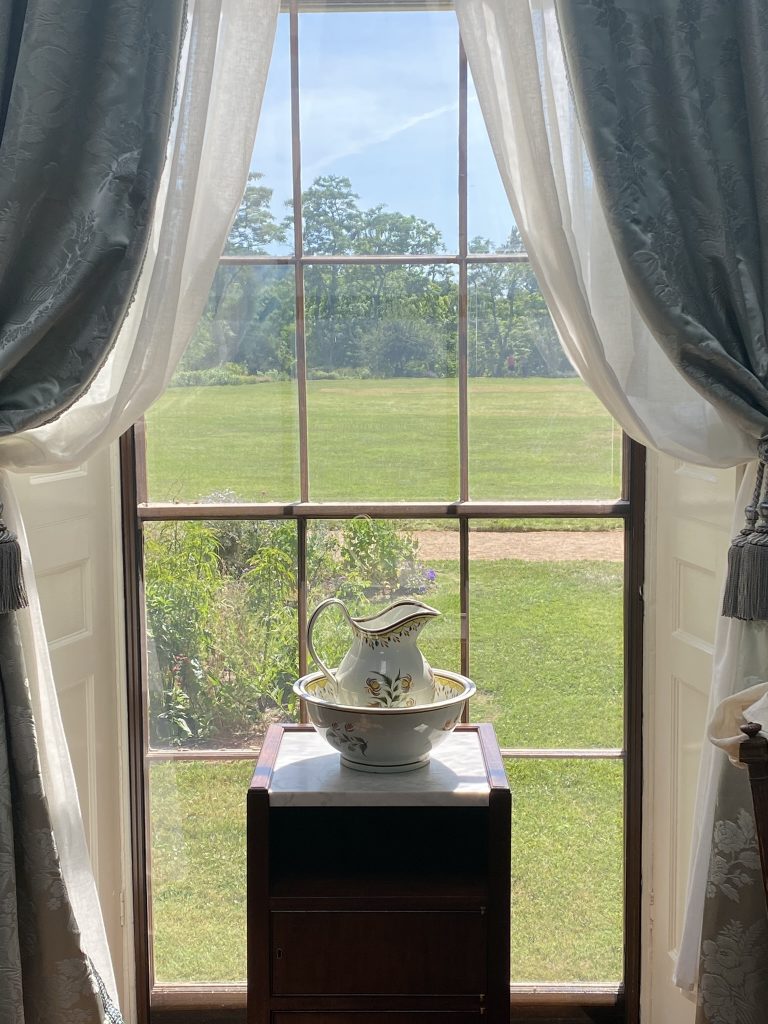
“I cannot live without books”- TJ
The books adorning the walls of Monticello are small demonstration of the three massive libraries Jefferson amassed over his lifetime. His first collection was destroyed when his childhood home burned down. After the British sacked DC in 1814, Jefferson sold his second and largest collection to restart the Library of Congress. Sadly, much of that set burned in another fire in 1851. He donated his third and final collection to his “last act of usefulness”, the University of Virginia, shortly before his death.
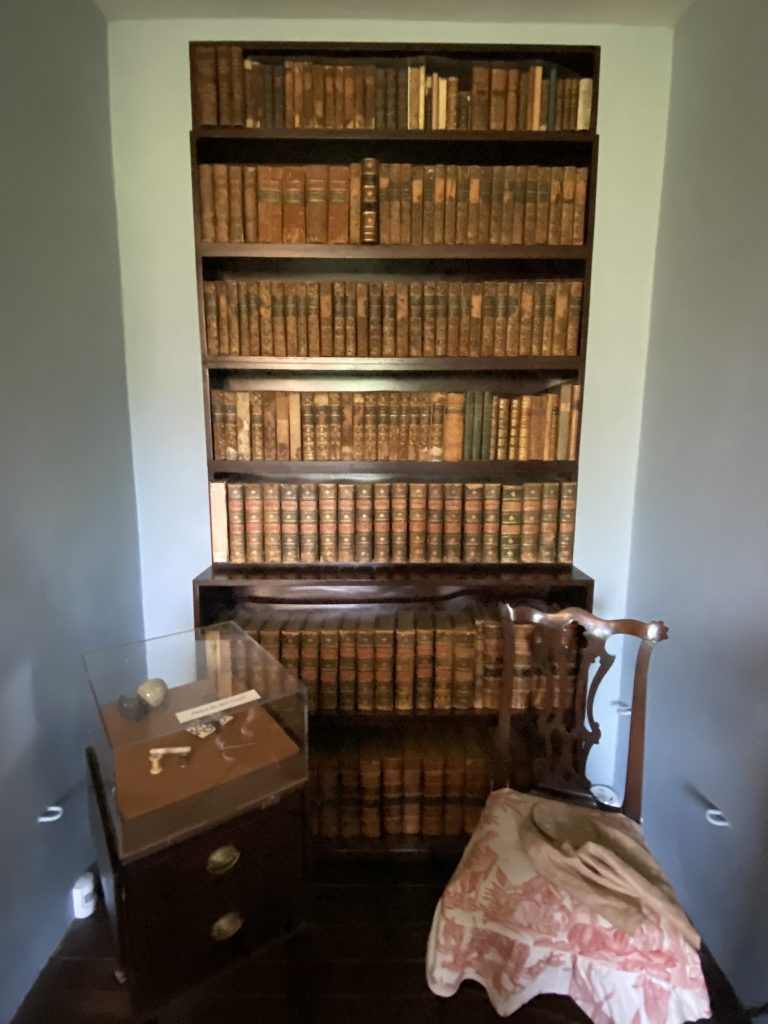
“Comfort and convenience” – TJ
Every inch of the house seems to have been considered for function and productivity. Brilliant thought in the middle of the night? The alcove bed opens into the dressing and cabinet rooms just in case a quick writing session was in order. Need to find the right pair of pants quickly? Rotating trouser racks make quick work of locating the day’s look.
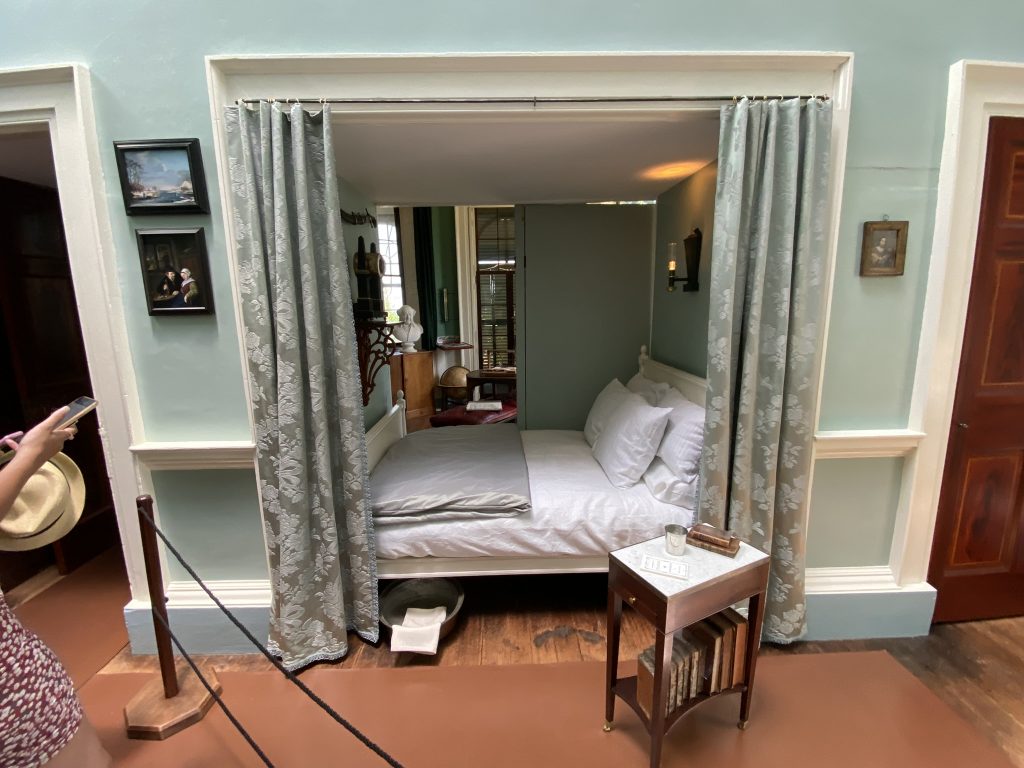
As a man of prolific correspondence, Jefferson used polygraph machine to create two copies of every document! His library also contains an octagonal table with cleverly alphabetized drawers to organize his many letters.

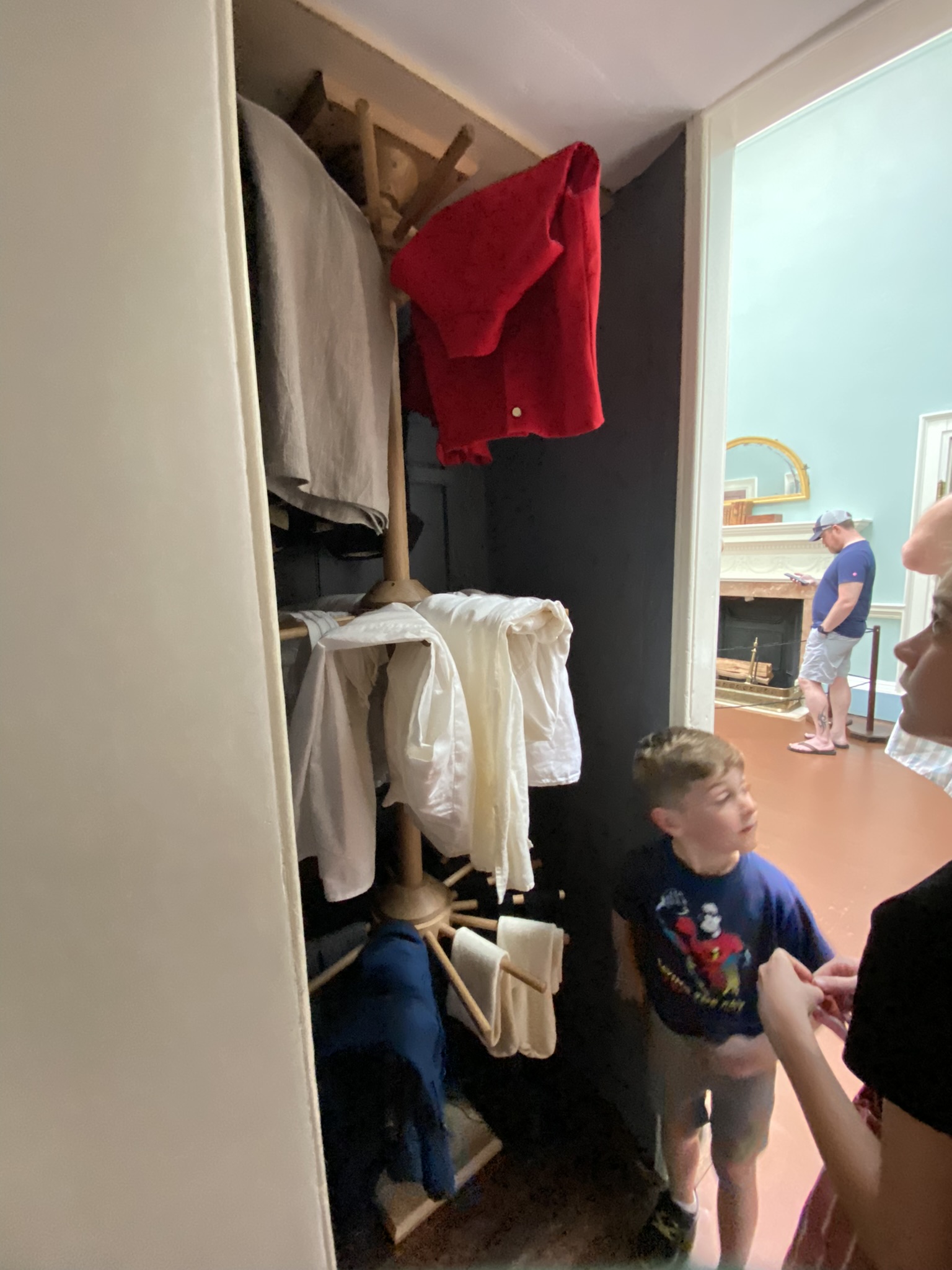
“Good wine is a necessity of life” – TJ
Not to be left out, the vibrant yellow dining room contains its own clever details. Hidden within the fireplace mantle, a dumbwaiter connects to the wine room below, delivering a fresh bottle in a snap. And a revolving service door reduced the noise associated with the staff required to produce large meals.
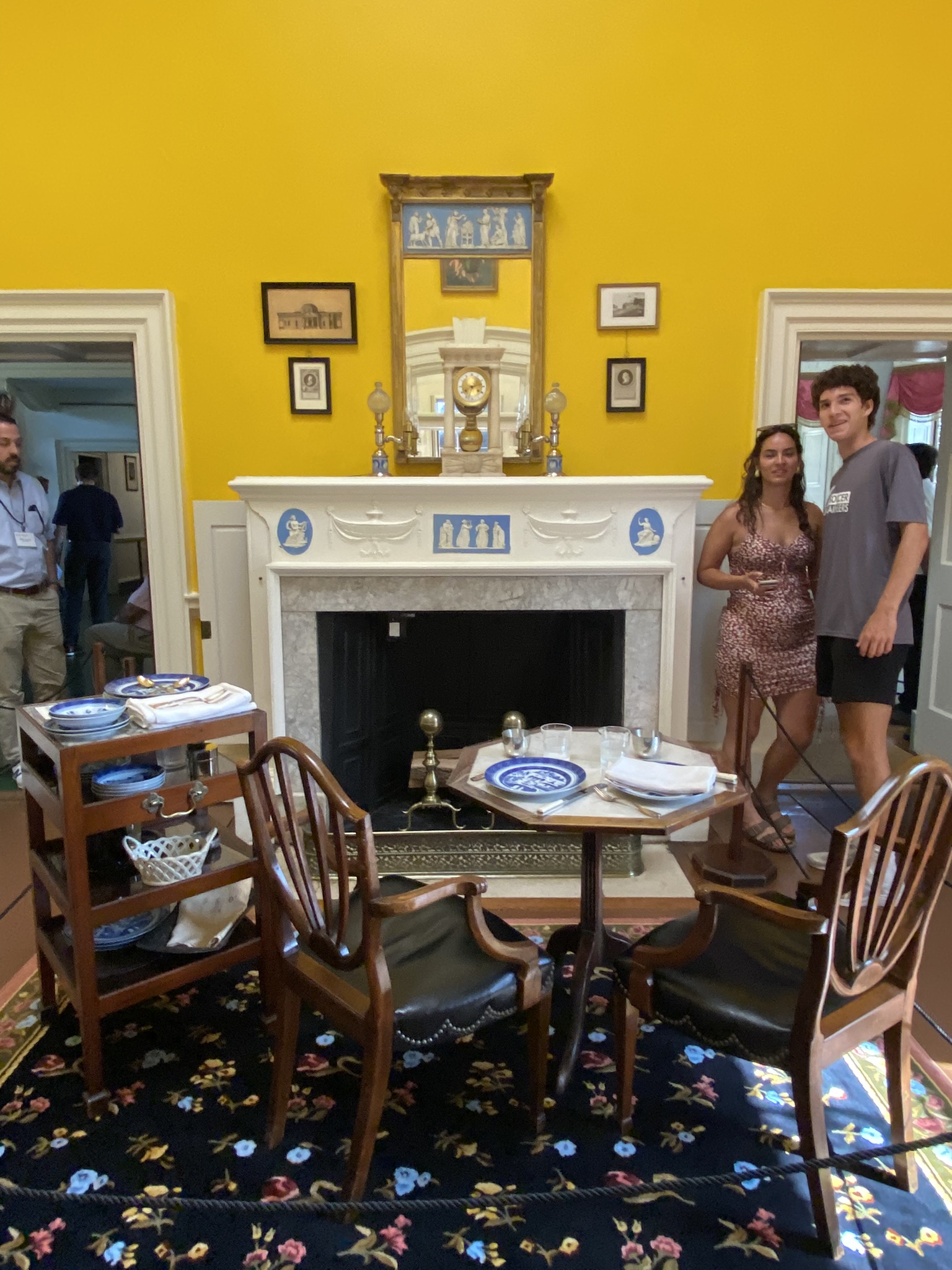

But always draped over that function are the finest items of the day. Silk curtains, fine china, marble counters, meticulously carved moldings, dozens of oil paintings of iconic figures, hand woven rugs and expensive vibrant paint colors send clear messages of his status.
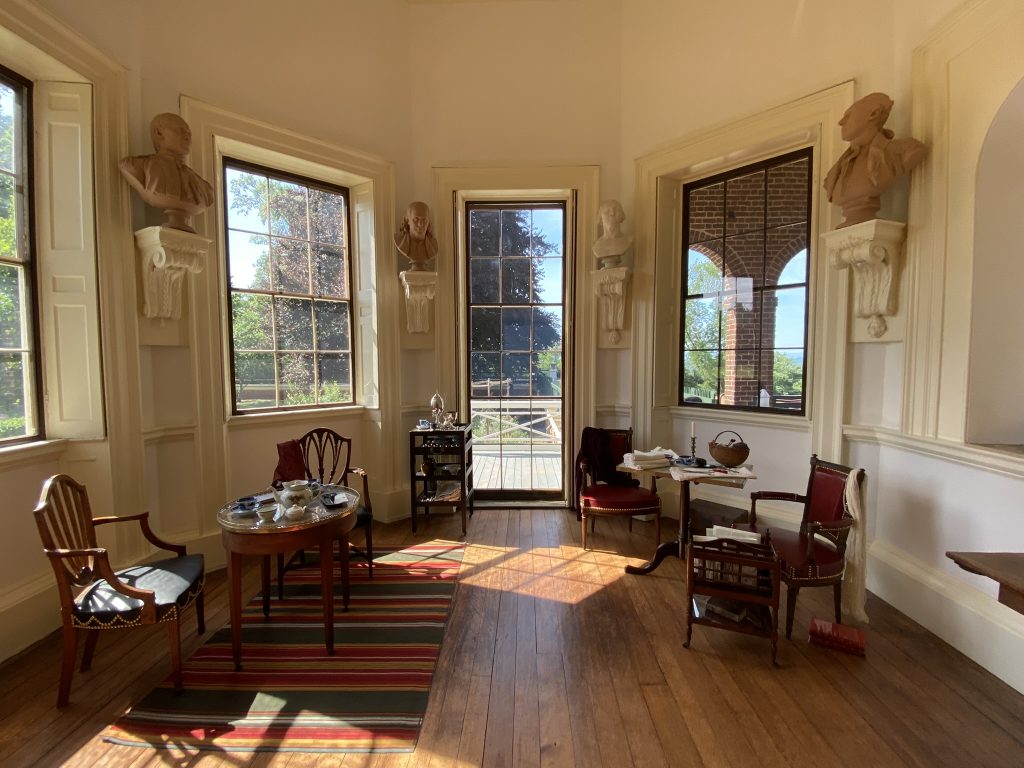
“Last act of usefulness”- TJ
By voraciously consuming the knowledge of the day, Jefferson became a self-taught architect for many of Virginia’s notable buildings. After designing the capitol building in Richmond, he set his sights on creating a university just a short distance from his home. Bearing Jefferson’s obvious architectural fingerprints, the University of Virginia is the first founded by a U.S. President.

“Natural right of all mankind to share useful improvement without restraint” – TJ
Jefferson’s engineering genius continues outside, with the service buildings cleverly built into the sides of the hill. Out of sight of the main property under the north pavilion lie the stables, carriage storage along and the icehouse. Filled with winter ice and snow then insulated with straw, this 16′ x 16′ underground cylinder kept meat, butter and wine preserved year-round.
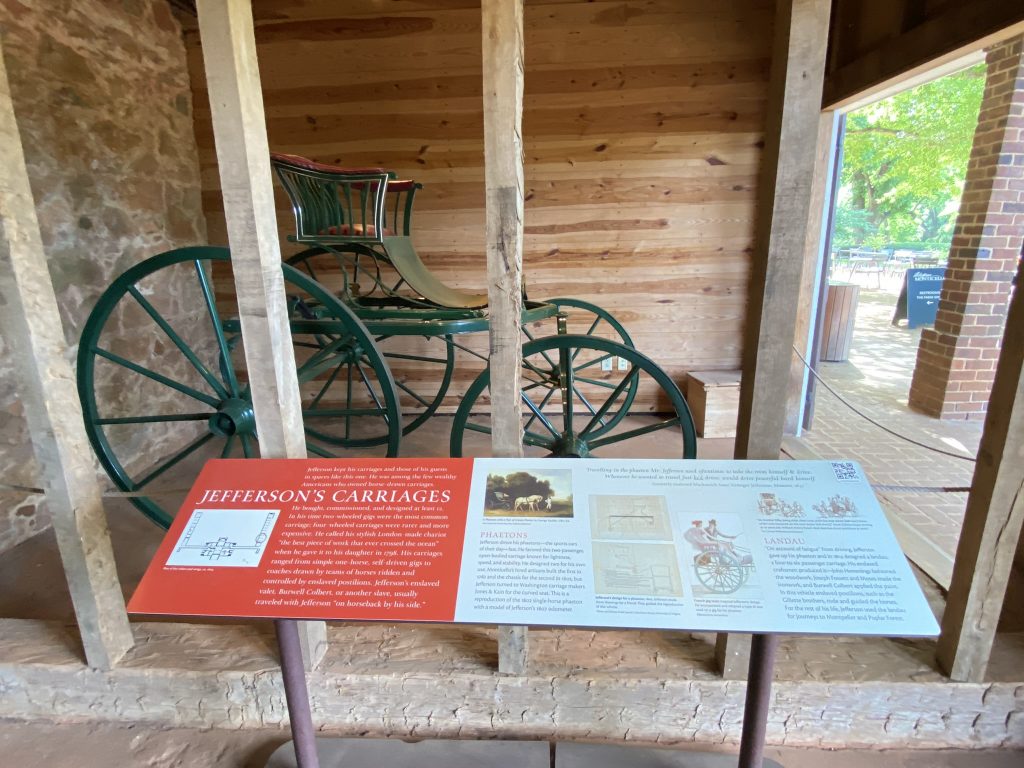
Beneath the house, a single passageway with lined with storerooms connects the north and south pavilions. Here located the bottom of the entry clock and wine dumbwaiter, before finding ourselves in the kitchen. While serving as the French Ambassador, Jefferson insisted his slave James Hemmings learn to cook many of his favorite dishes. Upon return to the US, meals at Monticello were revered to be “half Virginian, half French style in good taste and abundance.”
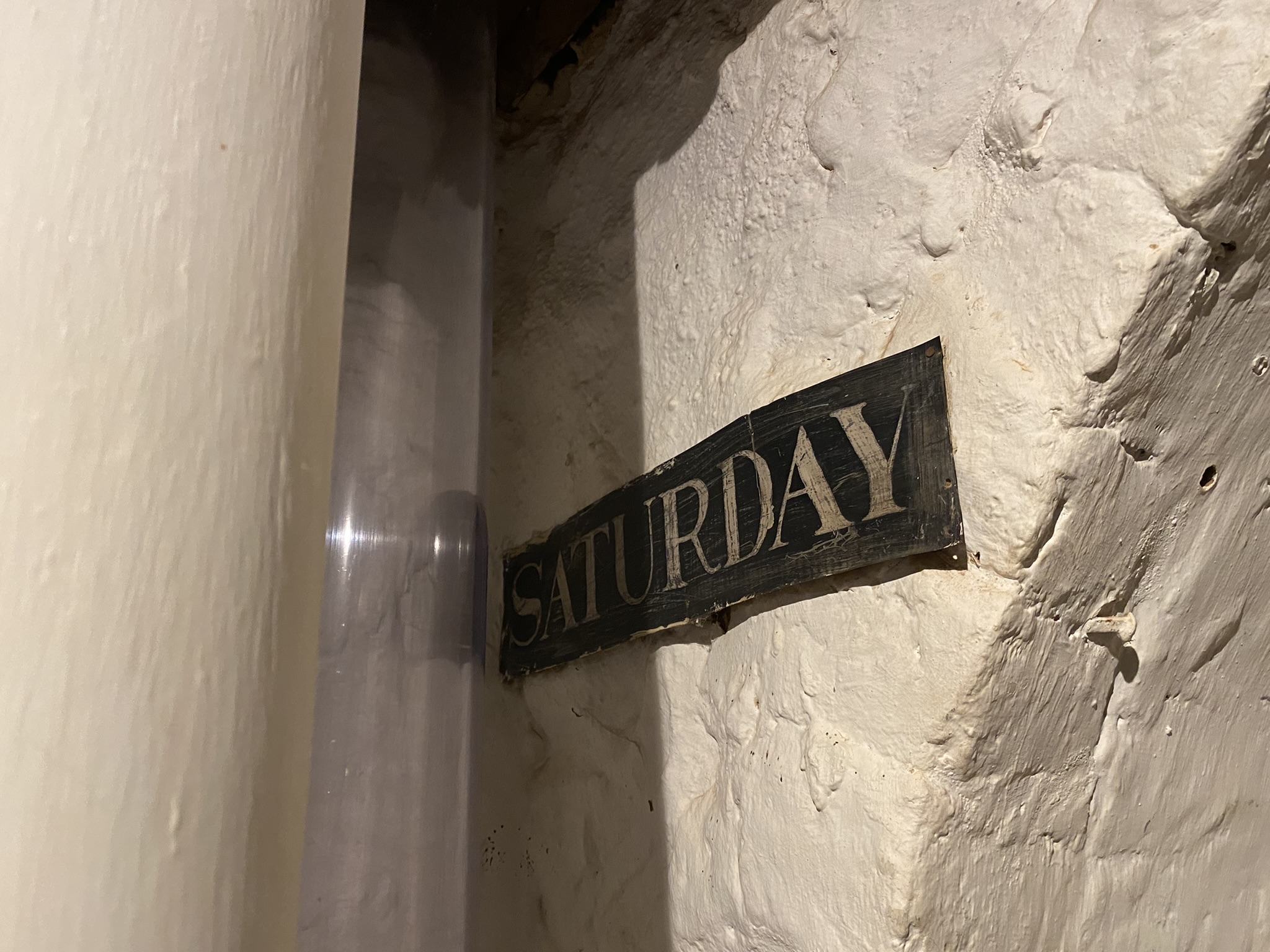
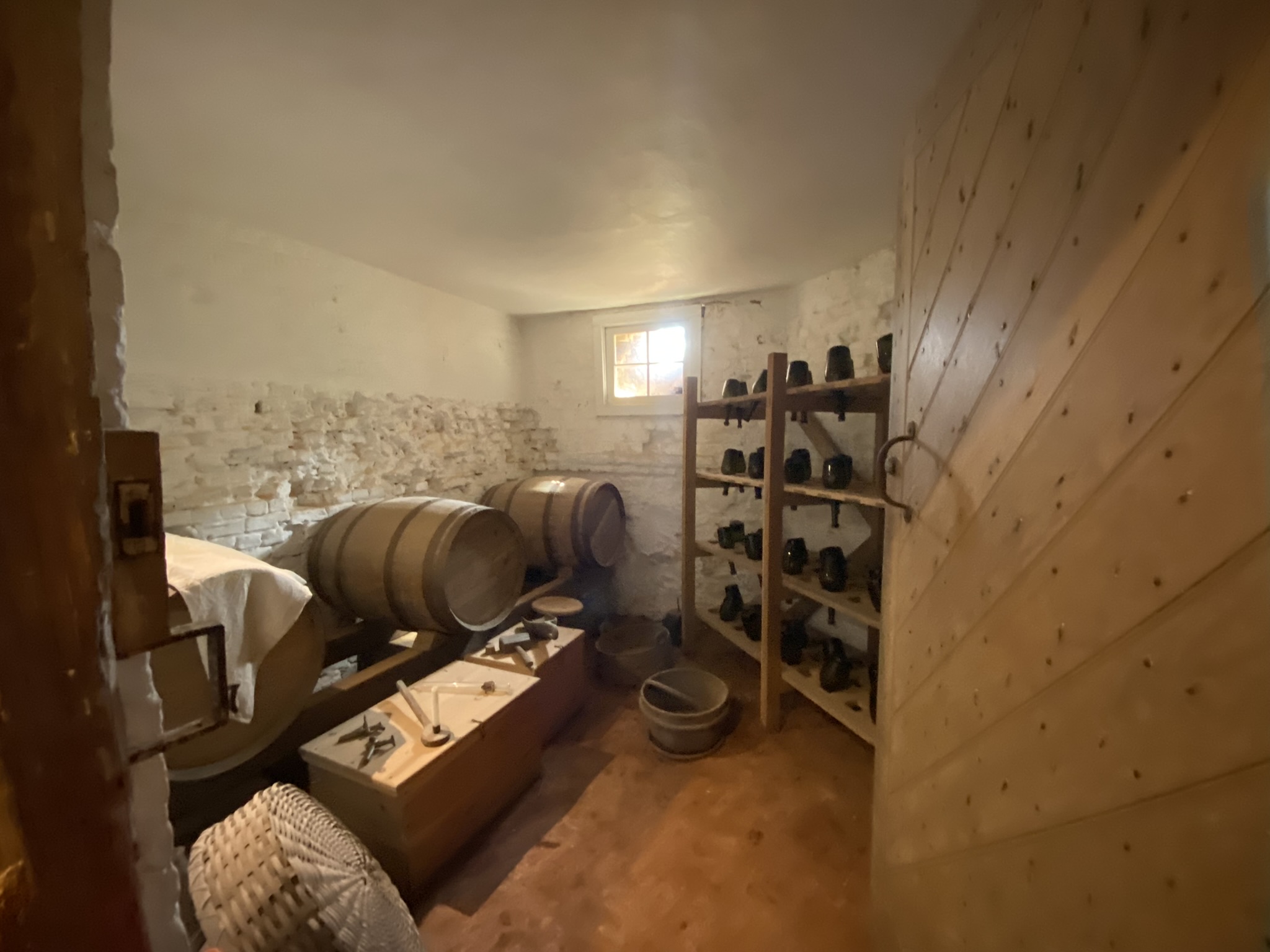
“Nothing is more certainly written in the book of fate then that these people are to be free” -TJ
As we continued out of the kitchen to the south pavilion, the kids grew distressed learning that the fascinating man who lived above had enslaved hundreds of people, including four of his own children by Sally Hemmings. While the Hemmings children and many others were eventually freed, all the slaves’ stories are an integral component of the legacy of the man whose name adorns history books.
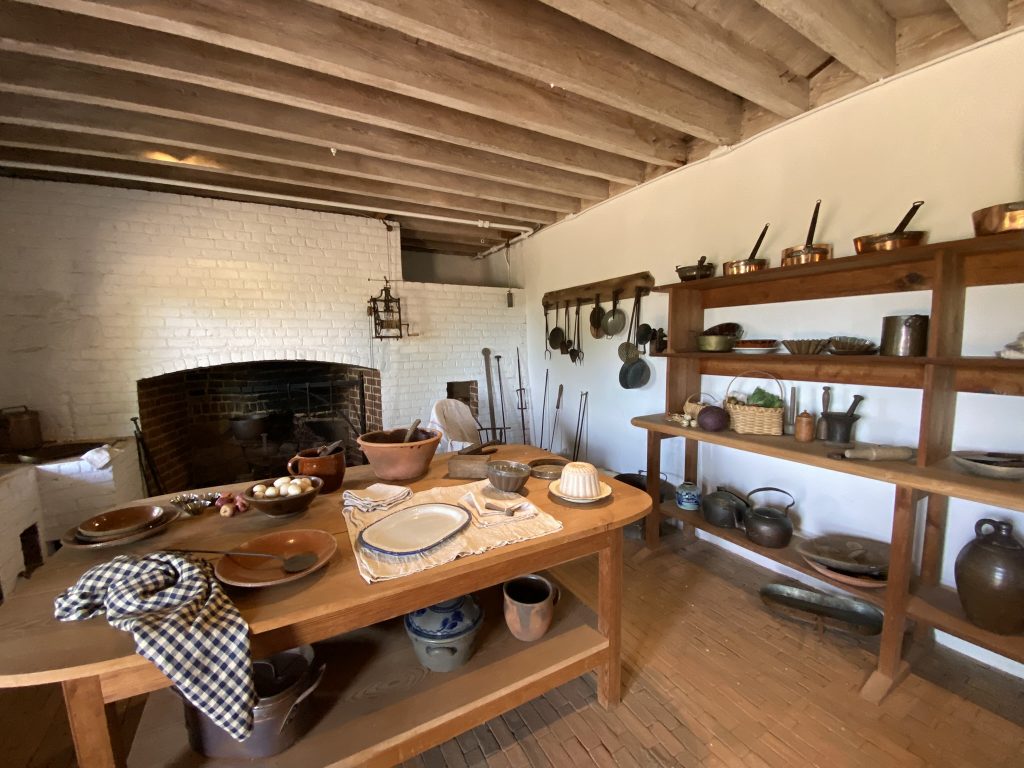
Jefferson kept detailed accounts of farm profits and personal assets, but the daily lives of the enslaved are poorly documented. Most of the 20+ structures along Mulberry Row have been reconstructed after excavation in recent decades. It’s hypothesized that many more slave homes and support buildings actually existed on the property. Monticello does a fantastic job of creating a canvas for dialogue with kids about the terrible reality of slavery and the complexities of living in a time and place that normalized it.
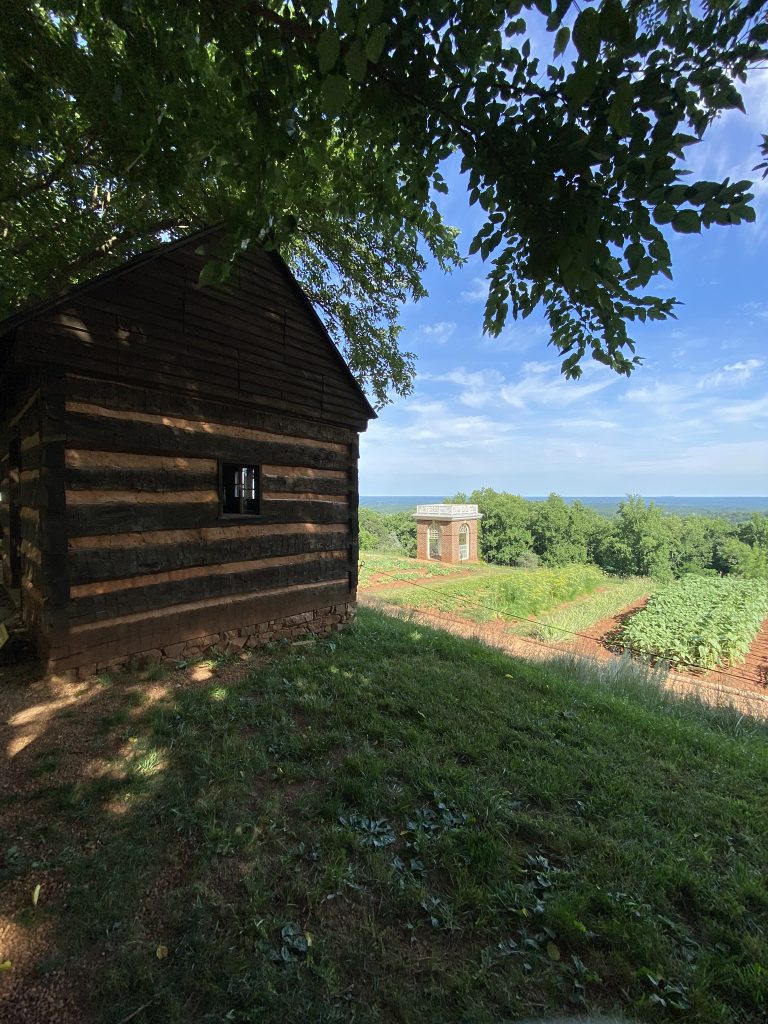
“There is not a sprig of grass that shoots uninteresting to me” – TJ
After pushing through some heavy exhibits that elicited hard conversations, we took a stroll around the gardens. From here, the first rotunda constructed on a residential American home is beautifully displayed. Considered one of the founders of American botany, Jefferson reveled in collecting and sharing many beautiful plants and trees during his lifetime. The 100+ varieties planted around the west lawn were regularly supplemented by his yearly 700+ seed shipment from the Jardin des Plantes in Paris.
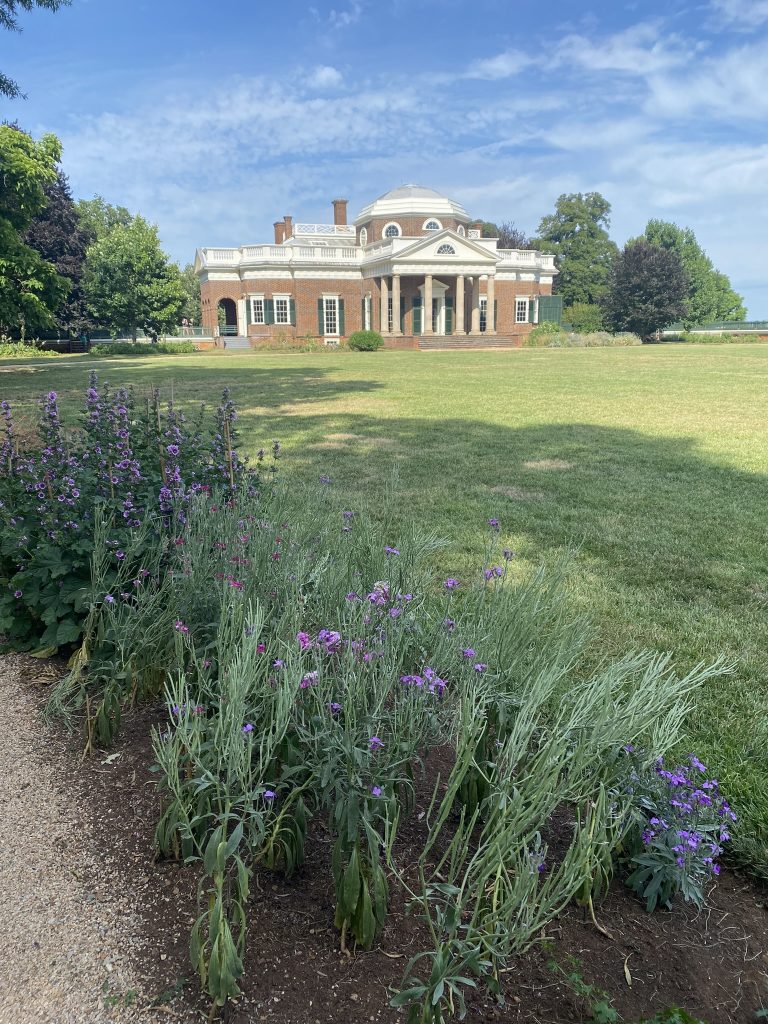
The final site we visited before heading down the hill was the massive vegetable garden which had to grow enough food for 150 people. Situated behind Mulberry Row, the giant garden spanned 3/4 mile and was surrounded by a stout fence to keep out deer and rabbits. Jefferson regularly worked from his garden pavilion, scientifically recording successes and failures in his “Garden Kalender”.

“My only fear is that I may live too long” – TJ
Just a short stroll down the hill lies the Jefferson Graveyard, first established with the burial of his childhood friend Dabney Carr. Generations of Jefferson’s relatives have since been buried, including most notably, Jefferson himself. After tourists began chipping away at his gravestone, the original was relocated to the main house and now resides at the University of Missouri. The granite obelisk visible on Jefferson’s grave today was placed by a Joint Resolution of Congress in 1882.

Sadly, Jefferson’s descendants through Sally Hemmings are not permitted to be buried within the family graveyard. While her gravesite is unknown, it is likely that her 3 children who died in infancy at Monticello joined the numerous bodies in the Slave Graveyard near the parking lot at the bottom of the hill. With a close look at this somber site, several rectangular disturbances are visible which contain the bodies of unnamed souls who never lived free.
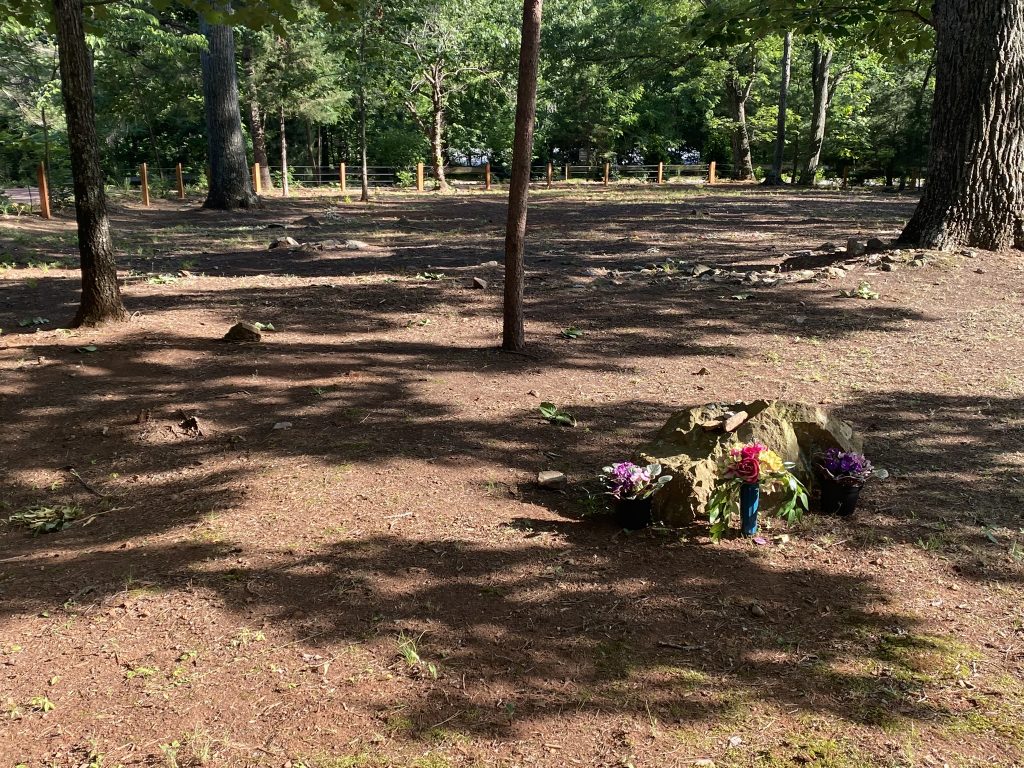
What else is there to do in Charlottesville?
We could have spent a week in this lovely slice of Virginia, but in just two days we saw learned and ate so much in Charlottesville. Check out our favorite adventures:
- Grab a historic lunch just down the hill from Monticello at the Mitchie Tavern
- Marvel at the majesty of nature in the Blue Ridge Parkway or Shenandoah National Park.
- Stop by the homes of Jefferson’s Presidential Successors at James Monroe’s Highland or James Madison’s Montpelier.
- Check out the Manassas Battlefield on the way to Washington D.C.
What did we miss? Let us know your favorite things about Monticello and the greater Charlottesville area in the comments.


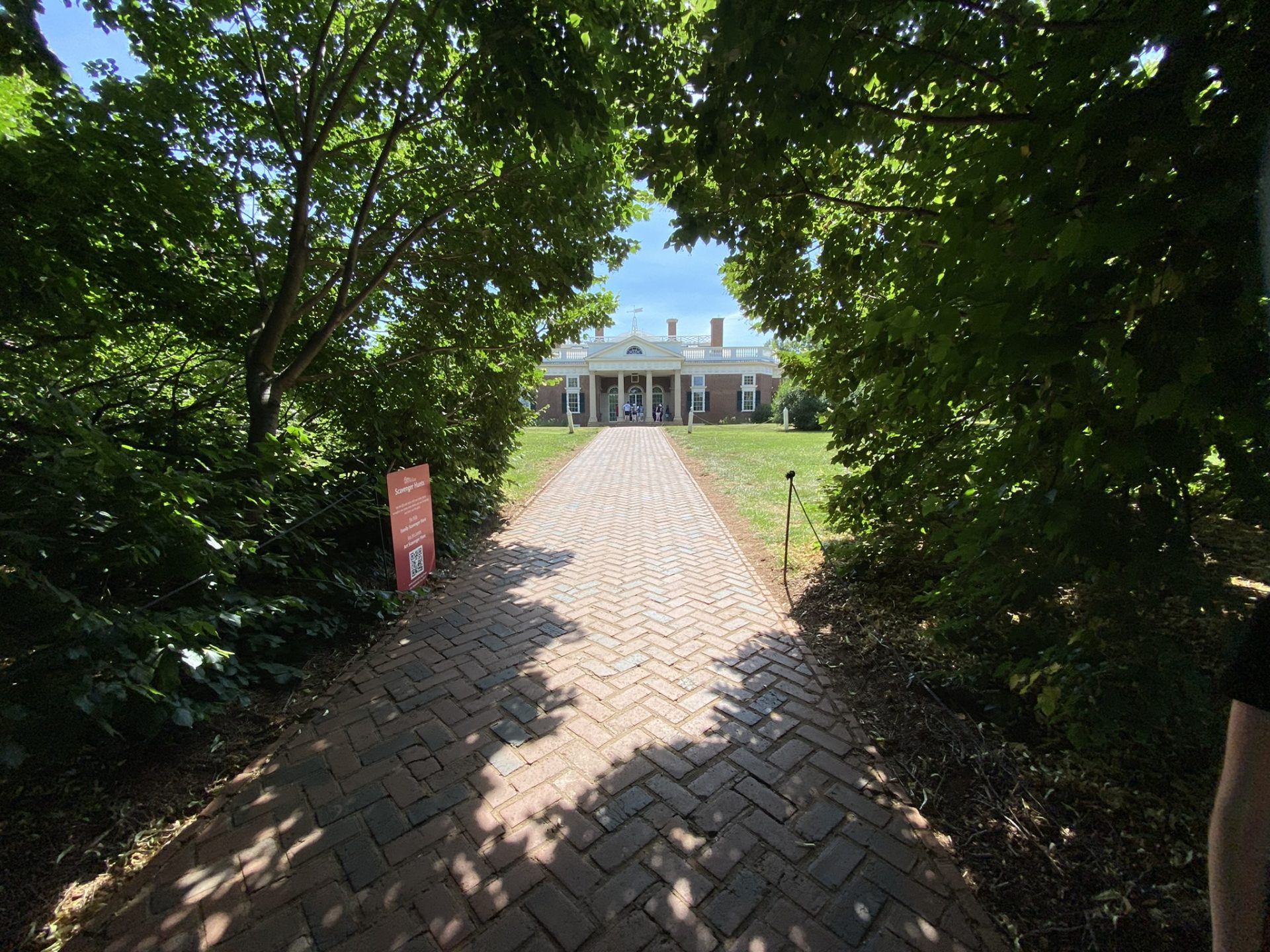

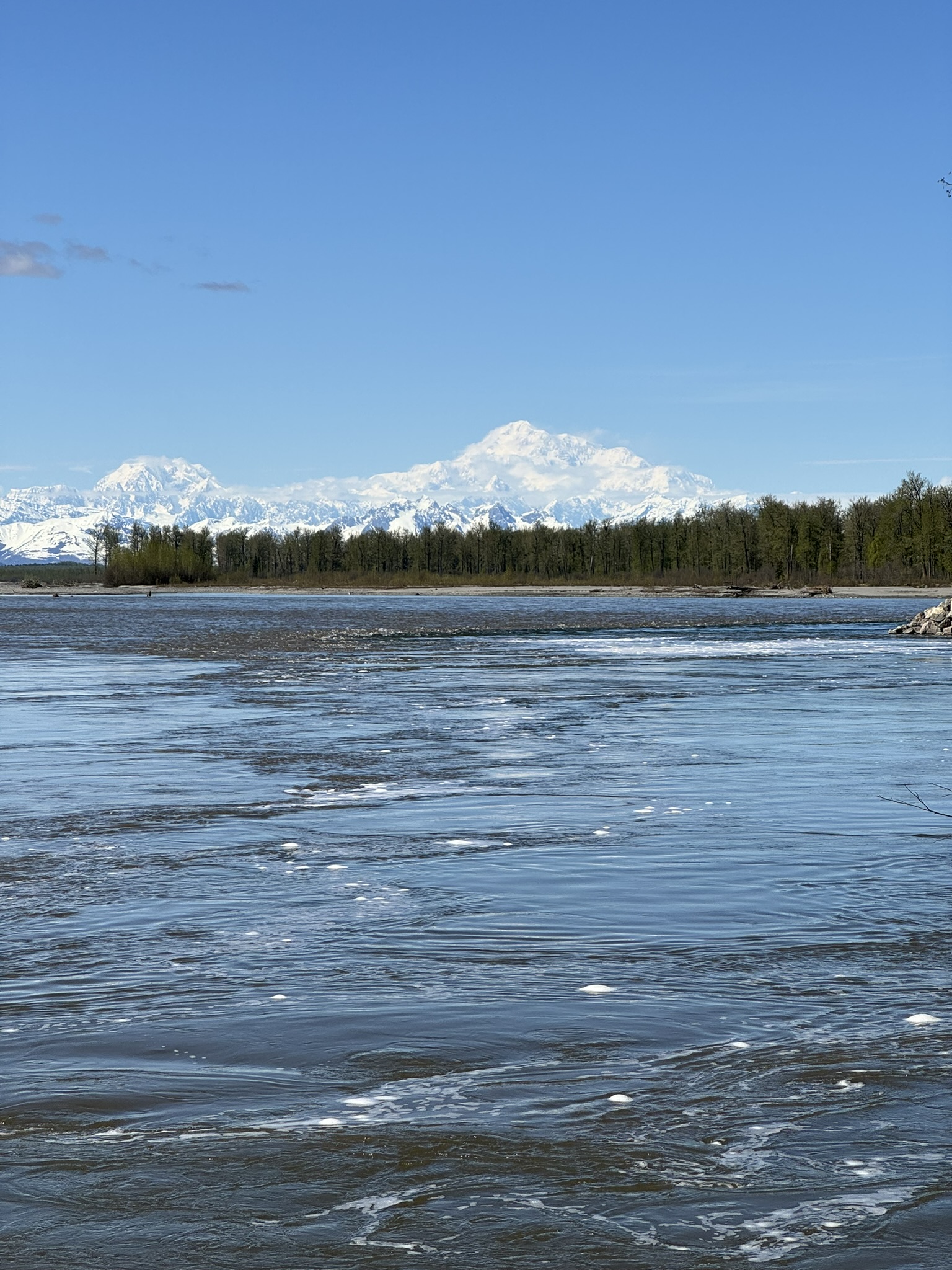

Leave a reply